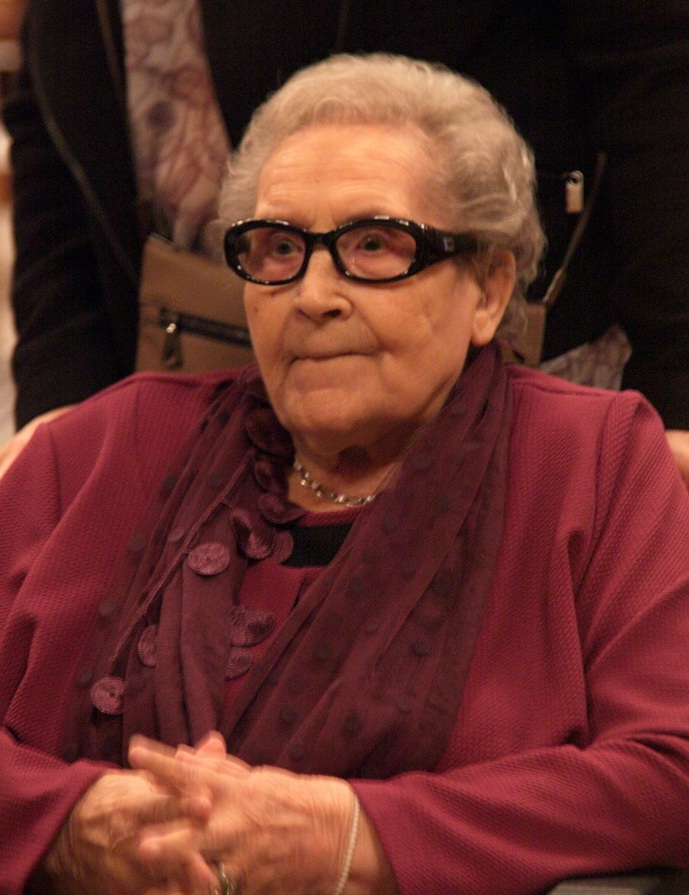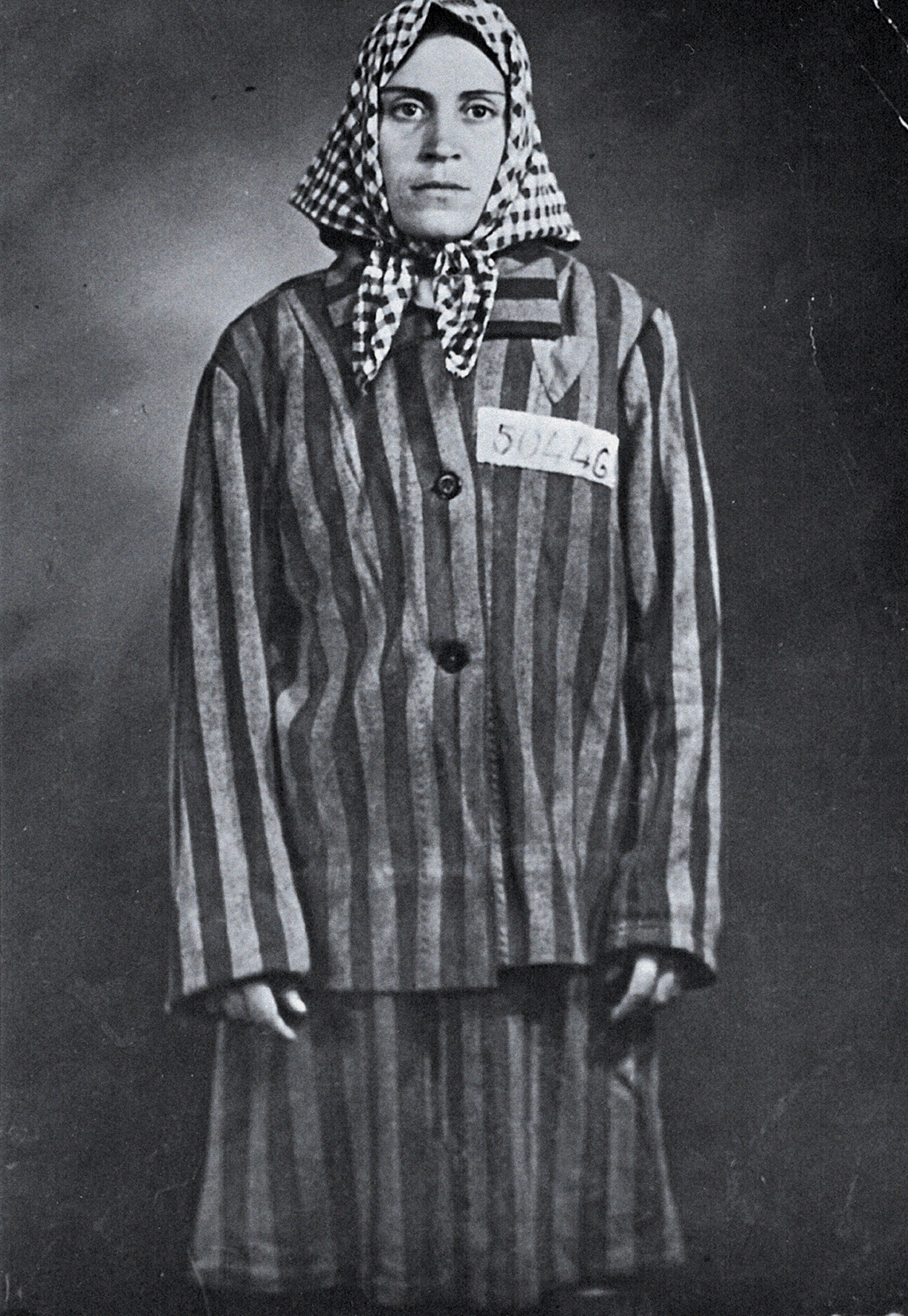Neus Català (1915-2019)

Català in October 2014 upon receiving the Medal for Civi Merit from the City of Barcelona. Photo Amadalvarez. CC BY-SA 4.0
On April 13, 2019 in the Catalonian village of Els Guiamets in the famed Priorat wine region, the anti-fascist activist and Nazi camp survivor Neus Català died in an assisted living facility only a few hundred yards from the house where she had been born 103 years earlier.
Català is one of the last Spanish survivors of Europe’s longest anti-fascist resistance, having fought against the Nationalist uprising in Spain and joined the French resistance in World War II, only to return to battle against the Franco regime until the dictator’s death in 1975.
While her survival stands as a testament to the stalwart, decades-long anti-fascist struggle of thousands of Communist, Anarchist and Marxist resisters, Català’s primary contribution to history is the collection of oral testimonies she gathered from other women activists who participated in the French Resistance and were deported to the Nazi camp of Ravensbrück, a factory of slave labor and murder designed by the Third Reich to punish exclusively female enemies of National Socialism. Català’s book of these recorded memories, De la resistencia y la deportación: 50 testimonios de mujeres españolas [Of resistance and deportation: 50 testimonies of Spanish women] came out in 1984. Along with Cárcel de mujeres [Prison of Women]—a similar collection, gathered by the Communist Tomasa Cuevas, on the brutal incarceration of Spanish anti-Francoist women—Català’s book constitutes the main historical evidence today of the sacrifices, valor, and suffering of Spain’s female militancy against Nazism and the dictatorship. The feminist contribution of Català’s work as an oral historian cannot be underestimated.
Neus Català Pallejà was born on October 6, 1915. Her father worked as farmer, growing olives and grapes. By age 14, Neus also worked in viniculture, where she felt the injustice of unequal pay for women. Her first political action demanded that women earn the same as men during the harvest season.
After joining a Catalan communist youth, group Català moved to Barcelona, where she studied to become a nurse. During the chaos of the Spanish Civil War, she found herself as a caregiver to war orphans. When Barcelona’s fall seemed imminent, Català led 182 orphans on foot across the snow-covered Pyrenees into France and secured safe housing for the children.
With her Anarchist husband Albert Roger, Neus set up a safe house for the fighters of the local anti-Nazi guerrilla, known as the “maquis de Turnac.” Like many women in the Resistance, her work entailed transporting weapons and clandestine documents, sheltering Resistance fighters, falsifying identification cards, and running a hidden printing press.
When a French collaborator betrayed the location of the safe house, she and Roger were arrested by the Gestapo in November 1943. After being tortured and imprisoned in Limoges, Neus was deported to the women’s concentration camp at Ravensbrück, north of Berlin, while her husband was sent to Bergen-Belsen. Roger would not survive the Nazi camp.
Like many women who made it out of Ravensbrück alive, Català describes the terror and disorientation of the Nazi camp. The daily humiliations, tortures, starvation and meaningless slave labor killed women by the tens of thousands. Because Català was deemed “fit for work,” she was transferred to a munitions factory in Holleschein, where she was part of a forced labor group quarrying granite and making parts for fighter planes. Català and other Spanish resisters rallied other slave laborers to boycott or sabotage weapons production; this was their only and highly dangerous method for continuing their resistance to fascism. “We women disrupted various stages of the production in the manufacture of weapons,” she later explained. “Our sabotage produced millions of defective bullets and thousands of unusable artillery shells. We would crush up bugs—flies or roaches—and put them into the shells. Even our own spit rendered them ineffective!”
A combination of luck, youth, and determination, but primarily great solidarity among women prisoners, enabled Català to survive. Although she was critically ill and starving when the camp was liberated in April 1945, Neus recovered and remained in France, where she threw herself into the anti-Franco resistance. She struggled to balance the duties of new motherhood with her assignments from the Spanish communist party that sent her on underground missions. While French resisters were celebrated in postwar Europe, the important role played by Spaniards in the Resistance remained largely unrecognized. Through her decades of exile in France, Català sought out and recorded the memories of her women comrades to secure their place in the larger narrative of anti-fascism.
Català eventually married again, to a Spanish exile, Félix Sancho. Like many women survivors of the Lager who had suffered sinister gynecological exams and experiments in the camps, Català had believed she could not have children. To her great joy, she had two —Margarita and Lluís— who still reside in Paris. In 1978, after the transition to democracy in Spain, Neus and Félix returned to Catalonia, where she headed up the Amical de Ravensbrück, the anti-fascist organization of women veterans and camp survivors. She was widely honored in Catalonia: 2015 was officially named the year of Neus Català.
Gina Herrmann teaches at the University of Oregon.














[…] margins” creating “solidarity networks that became networks of resistance” (Graham, 2005). Women were often involved with often very dangerous liaison work as resistance fighters much like Me… Western audiences are unlikely to resonate with these powerful characters’ roles in this […]